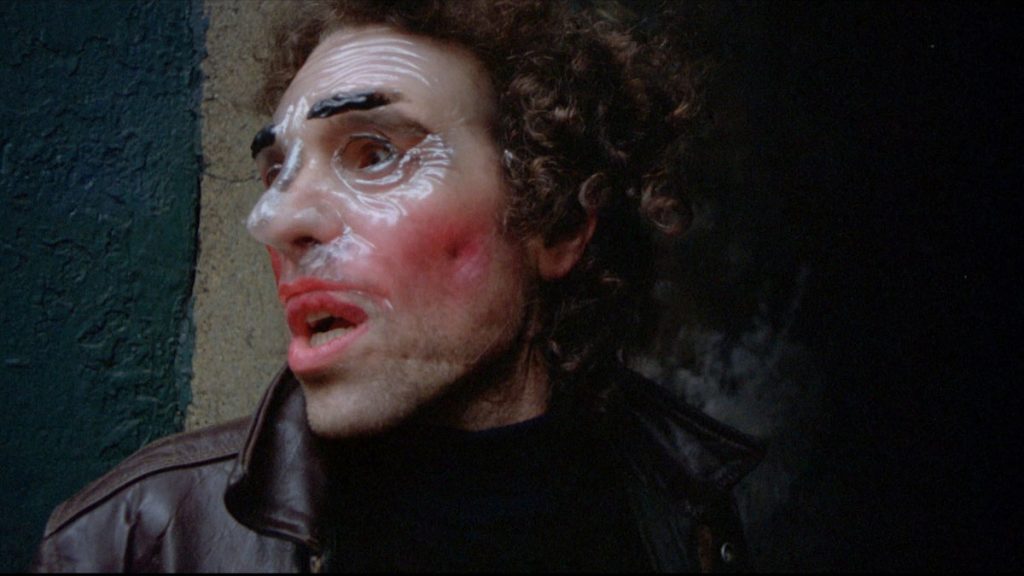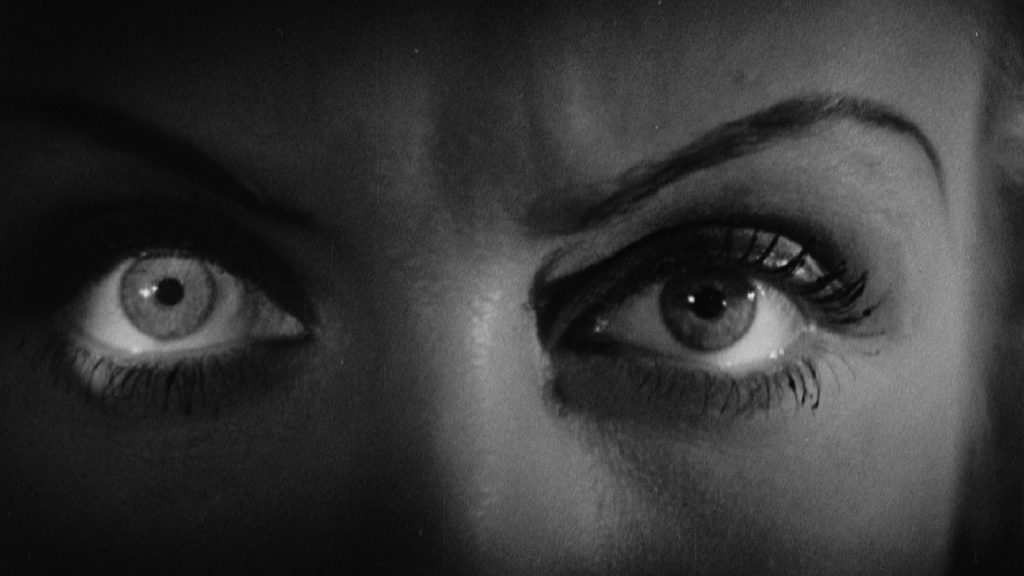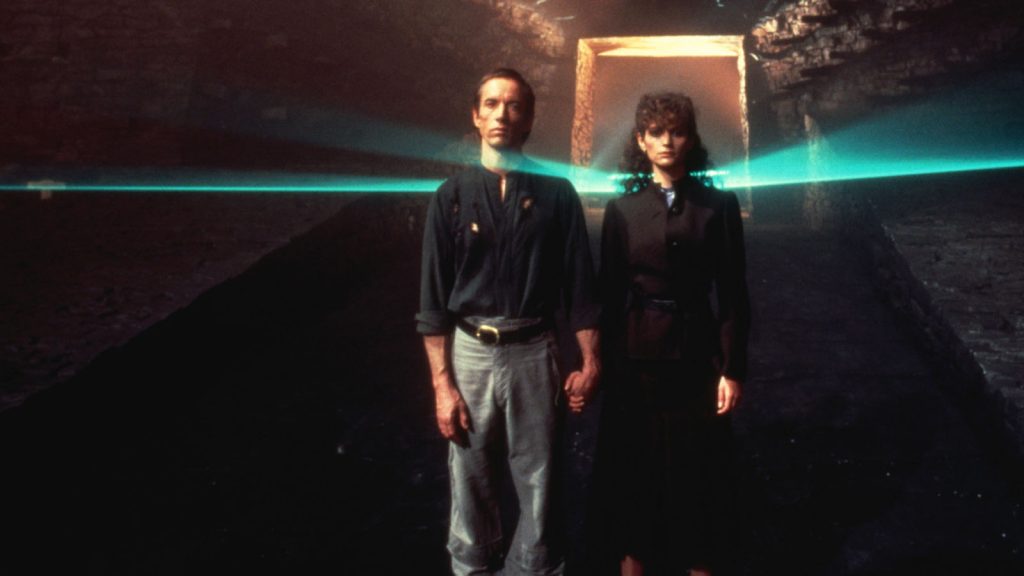Stripped to its essentials, the story could be an especially bleak, brazenly sleazy fairy tale. Thana, a young seamstress working in Manhattan’s Garment District, is raped not once, but twice, in the space of perhaps one hour—this is the New York Taxi Driver warned you about. The first incident transpires in an alley after being yanked off a sidewalk, the second in Thana’s own apartment, after she interrupts a robbery. In both cases, she’s warned not to cry out, though her attackers needn’t worry: Thana is mute. She is not, however, passive. In the midst of the second violation, she brains her rapist with a glass apple, then finishes him off with an iron. (Neither object is lingered over, but the symbolism—forbidden fruit; an implement of domestic work—is hard to miss.) Thana drags the body to her bathroom, where she later dismembers it before scattering its parts throughout the city. Thana appropriates the dead rapist’s .45 caliber pistol and, as days pass, as she’s repeatedly triggered, she undertakes a campaign of revenge, seeking any man who seems abusive to women and shooting them dead. (Our heroine’s name is presumably short for Thanatos, the personification of death in ancient Greek mythology, who carries souls to the underworld.) Thana’s spree continues, turning increasingly indiscriminate, until she’s assaulted one last time by, ironically, a woman, wielding a knife before her pubis like a dildo.
Ms .45 (1981) was Abel Ferrara’s third feature, following the pseudonymously directed 9 Lives of a Wet Pussy (1976) and The Driller Killer (1979). (It’s notable that Ferrara, under another pseudonym, plays the role of the first rapist, wearing a semi-transparent mask, as though he wants to be semi-recognizable, a face to lurk in one’s nightmares.) As with its predecessors, the screenplay for Ms .45 is credited to Ferrara’s high-school friend and frequent collaborator Nicholas St. John, though Zoë Tamerlis (later Zoë Lund), who portrays Thana, is said to have contributed significantly to her character’s development, and given her arresting performance, a masterful balance of emotion and opacity, this is surely true. Tamerlis was only 17 when Ms .45 was filmed, yet her work demonstrates both craftsmanship and a preternatural understanding of trauma. Despite being reviled in its time as shameless exploitation—which, in a sense, it is—Ms .45 gradually accrued cult status and feminist gravitas. Credit can be granted to the crude intelligence of St. John and Ferrara—whose adoration of Pasolini helps contextualize his predilection for the downtrodden—and to the resourceful, aesthetically rich work of art director Veronika Rocket and cinematographer James Lemmo. But perhaps what elevates Ms .45 above all is Tamerlis, who pivots seamlessly between haunting woundedness and dark fantasy. The power of Tamerlis’s work here is made more poignant by a dearth of subsequent showcase roles, though she’d later co-script and feature in Ferrara’s Bad Lieutenant (1992). She died in 1999, aged 37, of heart failure following many years of drug use.
Admittedly, this mightn’t be the most suitable moment to celebrate an American film depicting vigilante killings involving guns. Though Ms .45 can hardly be accused of glamorizing revenge. While Thana is young and beautiful, while she cuts an alluring figure in her baiting costumes—the nun get-up most audaciously—while she exudes merciless cool when unloading her titular firearm, only some of her actions adhere to any moral logic whatsoever, and her ultimate destiny is devastatingly sad, leaving her unrewarded and unable to recover from overwhelming shock and suffering. Ms .45 is not designed for catharsis. Rather, it chronicles a mad plunge into nihilism prompted by a world where misogynistic violence is mistaken for order.

is a freelance critic and playwright.
When he was casting the lead in Rabid in 1976, writer/director David Cronenberg wanted Sissy Spacek, but his producer John Dunning rejected her due to her Texas accent.
BY LAURA WYNNE | August 27, 2025
Everything is either fractured or in the process of splitting apart. It is the final decade of the Cold War, and Mark (Sam Neill), a spy, returns to West Berlin, the more prosperous, though eerily vacant, half of a divided city...
BY JOSÉ TEODORO | July 8, 2025
In what could be the fastest-resulting rape-revenge scenario in horror-movie history, a drunken lout brutally forces himself on a young woman, Ida (Shay Garner), during a family party in 1946, and directly after...
BY LAURA KERN | October 31, 2021

This pre-Code offering packs a lot of story into its typically brisk running time, with several plot threads weaving together a (not always successful) tapestry of spooky and criminal doings.
READ MORE >
BY ANN OLSSON | Month 00, 2021

In what could be the fastest-resulting rape revenge movie, a drunken lout brutally forces himself on Ida, the young woman who doesn't return his affections, during a party over Labor Day.
READ MORE >
BY LAURA KERN | Month 00, 2021

Beast is a lot of movies in one package - fractured fairy tale, belated-coming-of-age story, psychological drama, regional horror film - but above all it's a calling card for its leading lady, Jessie Buckley.
READ MORE >
BY LAURA KERN | Month 00, 2021